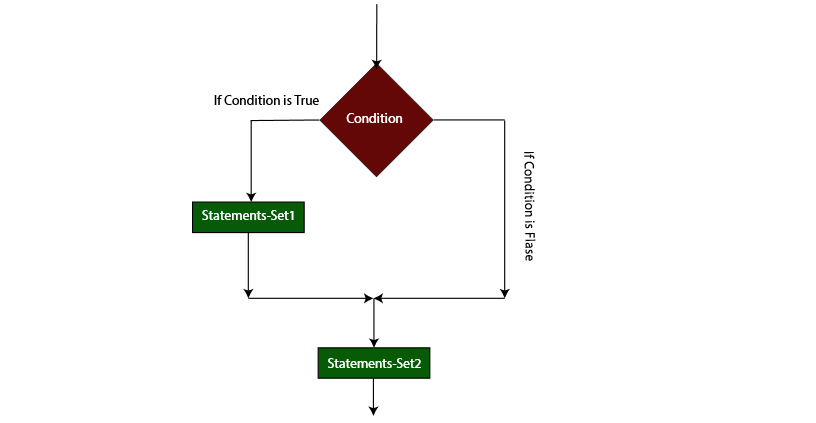Summary -
In this topic, we described about the below sections -
IF statement is a simple control statement that are used to verify one or more logical expressions/conditions. IF statement consists of a one or more logical expressions/Conditions followed by one or more statements.
ENDIF scope terminator is mandatory with if statement. Each statement in IF statement should ends with period(.) including IF and ENDIF.
Syntax -
IF <logical-expression>.
.
Statements-set1.
.
ENDIF.
Statement-set2.
Below diagram describes the flow of IF statement -

If the specified logical-expression is determined as true, then the statements-set1 executed. Next, the control goes to statements-set2. If the specified logical-expression is determined as false, then the control directly goes to statements-set2.
Example -
Below example shows how the IF statement coded in the application program.
Code -
*&---------------------------------------------------------------------*
*& Report Z_SIMPLE_IF
*&---------------------------------------------------------------------*
*& Written by TutorialsCampus
*&---------------------------------------------------------------------*
REPORT Z_SIMPLE_IF.
* Declaring Variable
DATA: W_OP1 TYPE I VALUE 90,
W_OP2 TYPE I VALUE 70.
* IF condition to verify which variable is bigger
IF W_OP1 GT W_OP2.
WRITE 'W_OP1 GREATER THAN W_OP2'.
ENDIF.
Output -

Explaining Example -
In the above example, each and every statement is preceeded with a comment to explain about the statement. Go through them to get clear understanding of example code.
IF W_OP1 GT W_OP2, verifying W_OP1 is GREATER THAN (GT) W_OP2. If yes, display 'W_OP1 GREATER THAN W_OP2'.
